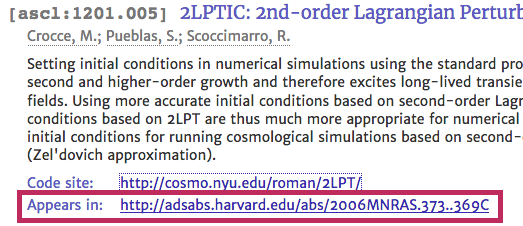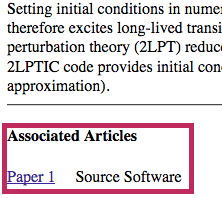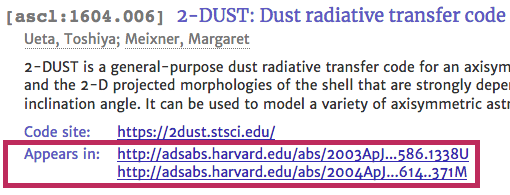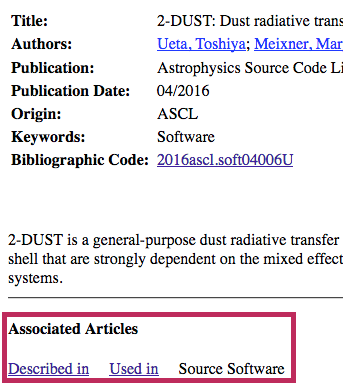Twenty codes were added to the ASCL in November 2018:
binaryBHexp: On-the-fly visualizations of precessing binary black holes
DiskSim: Modeling Accretion Disk Dynamics with SPH
DRAGONS: Gemini Observatory data reduction platform
Flame: Near-infrared and optical spectroscopy data reduction pipeline
gdr2_completeness: GaiaDR2 data retrieval and manipulation
MillCgs: Searching for Compact Groups in the Millennium Simulation
muLAn: gravitational MICROlensing Analysis Software
PENTACLE: Large-scale particle simulations code for planet formation
PulsarHunter: Searching for and confirming pulsars
pygad: Analysing Gadget Simulations with Python
Pylians: Python libraries for the analysis of numerical simulations
QuickSip: Project survey image properties onto the sky into Healpix maps
radon: Streak detection using the Fast Radon Transform
RLOS: Time-resolved imaging of model astrophysical jets
SEP: Source Extraction and Photometry
Shark: Flexible semi-analytic galaxy formation model
SIM5: Library for ray-tracing and radiation transport in general relativity
synphot: Synthetic photometry using Astropy
VoigtFit: Absorption line fitting for Voigt profiles
Vplanet: Virtual planet simulator




